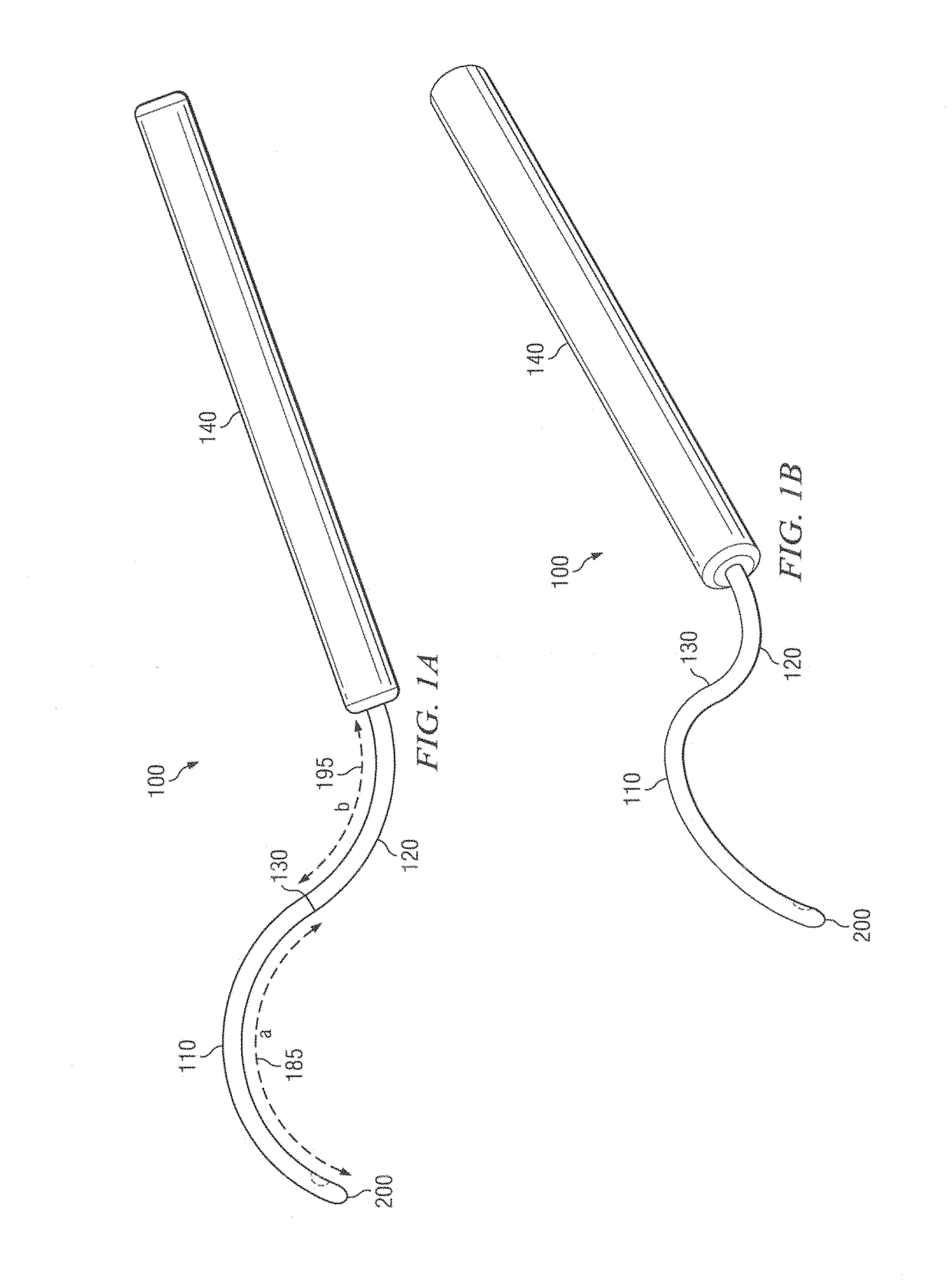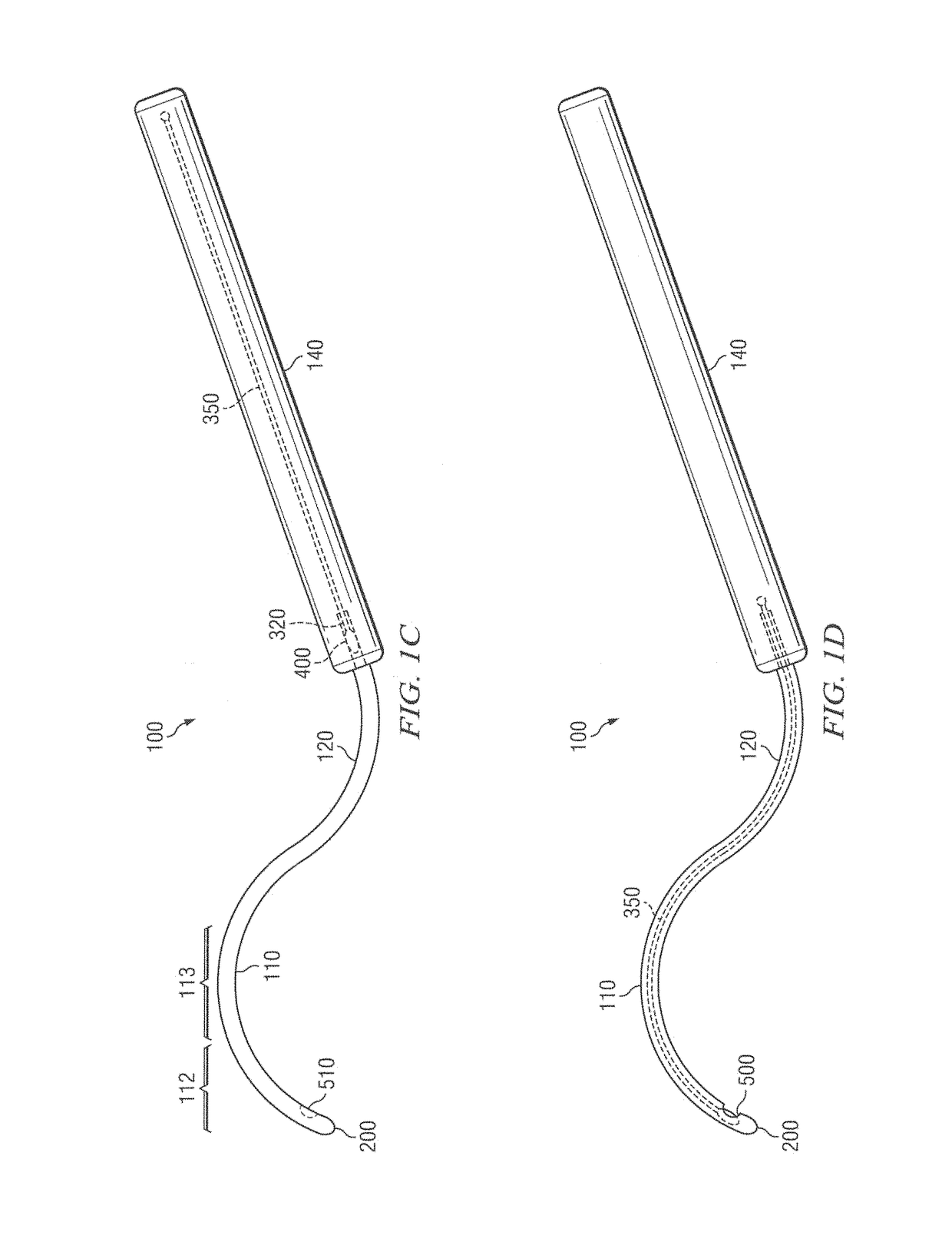Methods and devices for minimally-invasive delivery of radiation to the eye
a radiation delivery and eye technology, applied in the field of methods and devices for minimally-invasive delivery of radiation to the eye, can solve the problems of progressive damage to the retina, difficult or impossible to recognize faces, difficult or impossible reading, driving, etc., and achieve the effect of convenient and accurate placement of rbs and accurate localization of radiation over the targ
- Summary
- Abstract
- Description
- Claims
- Application Information
AI Technical Summary
Benefits of technology
Problems solved by technology
Method used
Image
Examples
example 1
Surgical Technique
[0366]The following example describes a surgical procedure for use of the cannulae of the present invention. The eye is anesthetized with a peribulbar or retrobulbar injection of a short acting anesthetic (e.g., Lydocaine). A button hole incision in the superotemporal conjunctiva is preformed followed by a button hole incision of the underlying Tenon capsule 230.
[0367]If a cannula 100 comprising a distal chamber 210 is used, a small conjunctive peritomy (as large as the diameter of the distal chamber) is performed at the superotemporal quadrant. A Tenon incision of the same size is then performed in the same area to access the subtenon space.
[0368]Balanced salt solution and / or lydocaine is then injected in the subtenon space to separate gently the Tenon capsule 230 from the sclera 235.
[0369]The cannula 100 is then inserted in the subtenon space and slid back until the tip 200 is at the posterior pole of the eye. In some embodiments, the cannula 100 comprises a loca...
example 2
Fast Radiation Fall Off at the Edge of the Target
[0374]After the cannula is placed into position, an RBS is introduced to the sclera region on the eye ball that corresponds with the target (e.g., macula lesion) on the retina. Radionuclide of the RBS is Sr-90, and the RBS has a rotationally symmetrical exposure surface (e.g., circular) (see FIG. 14E). The exposure surface of the RBS has a diameter of about 3 mm. The target is 3 mm in diameter and is about 1.5 mm away from the exposure surface of the RBS.
[0375]As shown in FIG. 22, a target that is 1.5 mm away from the exposure surface has a radiation profile where the intensity of the radiation at the edge falls off significantly, i.e., there is a fast fall of at the target edge. When a shielding (deep wall, see FIG. 21) is employed, the radiation fall off at the edge is faster compared to when there is no shielding.
[0376]In this example, the ratio of the target diameter to the exposure surface diameter is about 1:1.
PUM
 Login to View More
Login to View More Abstract
Description
Claims
Application Information
 Login to View More
Login to View More - R&D
- Intellectual Property
- Life Sciences
- Materials
- Tech Scout
- Unparalleled Data Quality
- Higher Quality Content
- 60% Fewer Hallucinations
Browse by: Latest US Patents, China's latest patents, Technical Efficacy Thesaurus, Application Domain, Technology Topic, Popular Technical Reports.
© 2025 PatSnap. All rights reserved.Legal|Privacy policy|Modern Slavery Act Transparency Statement|Sitemap|About US| Contact US: help@patsnap.com



